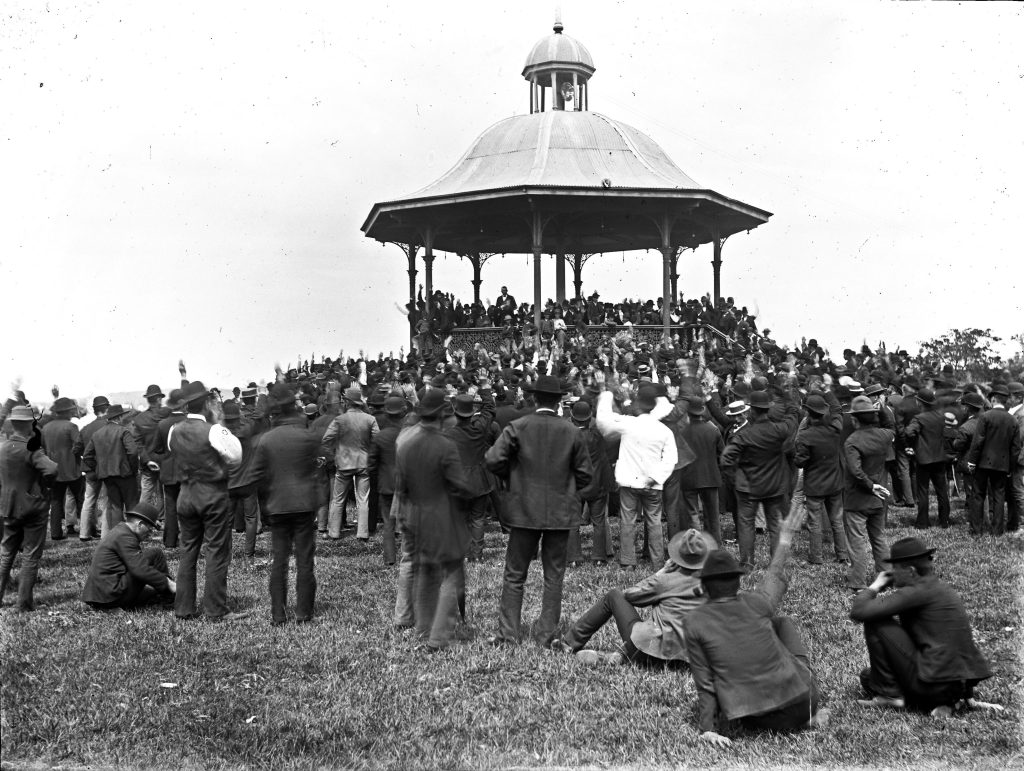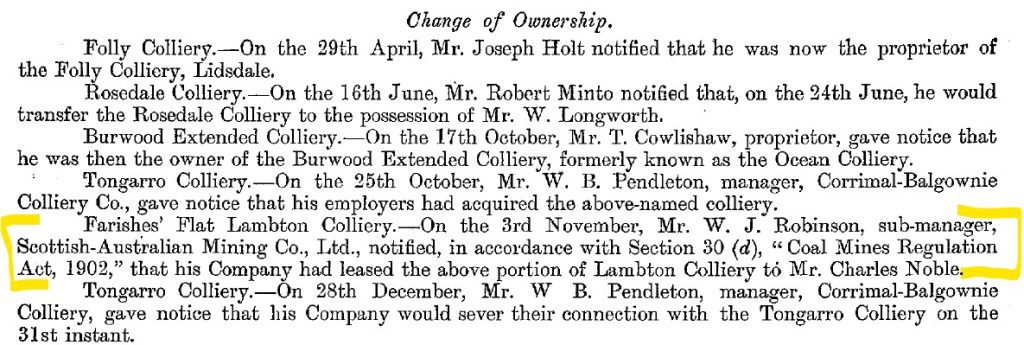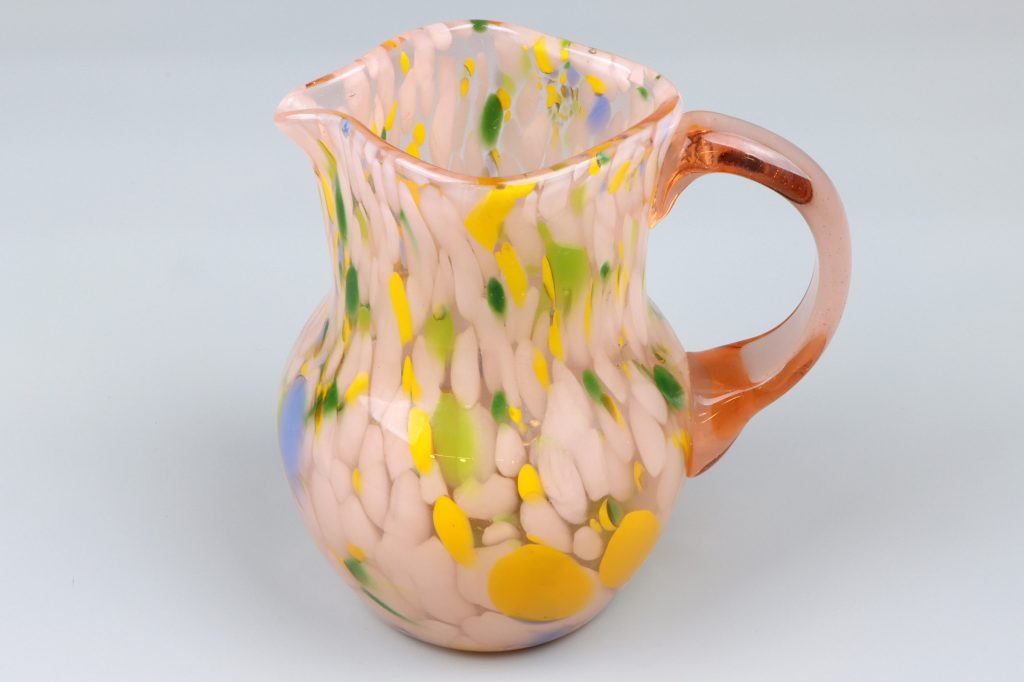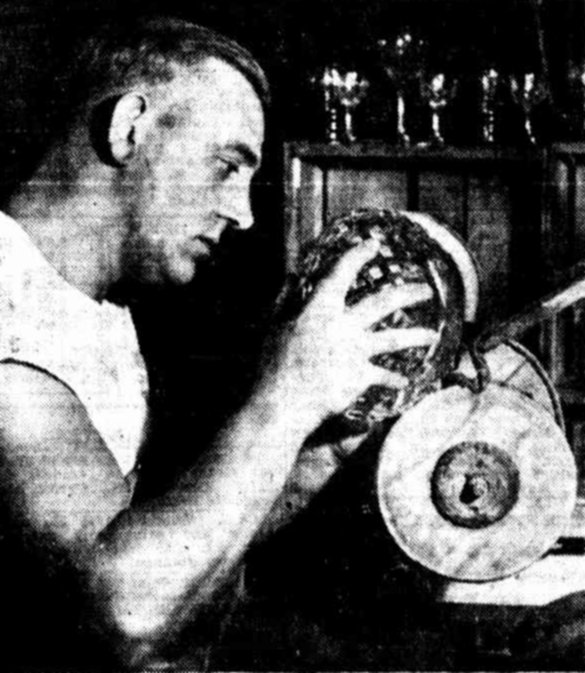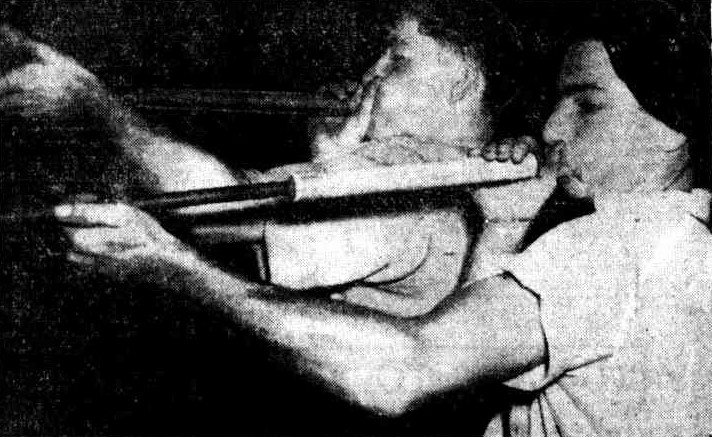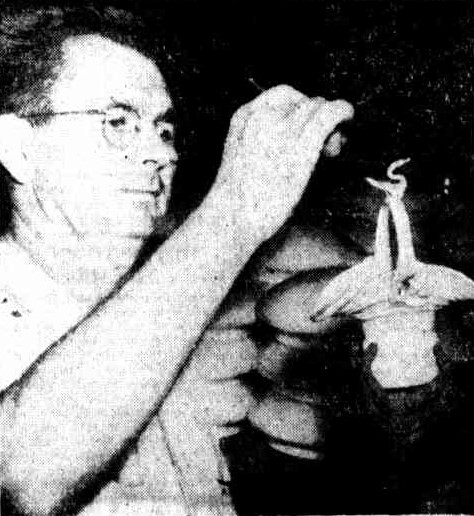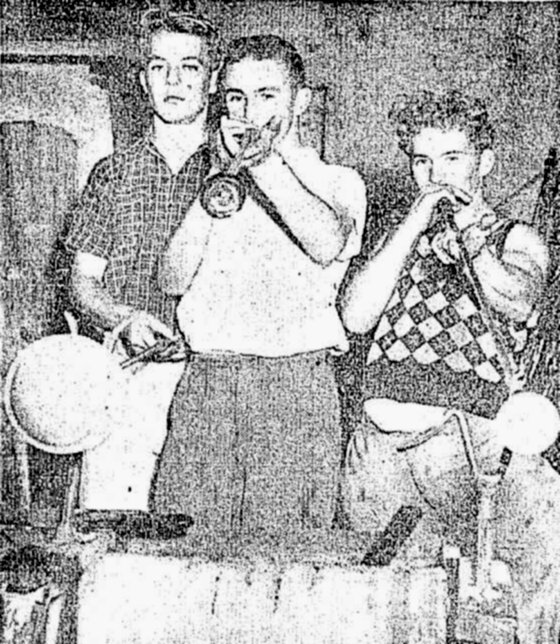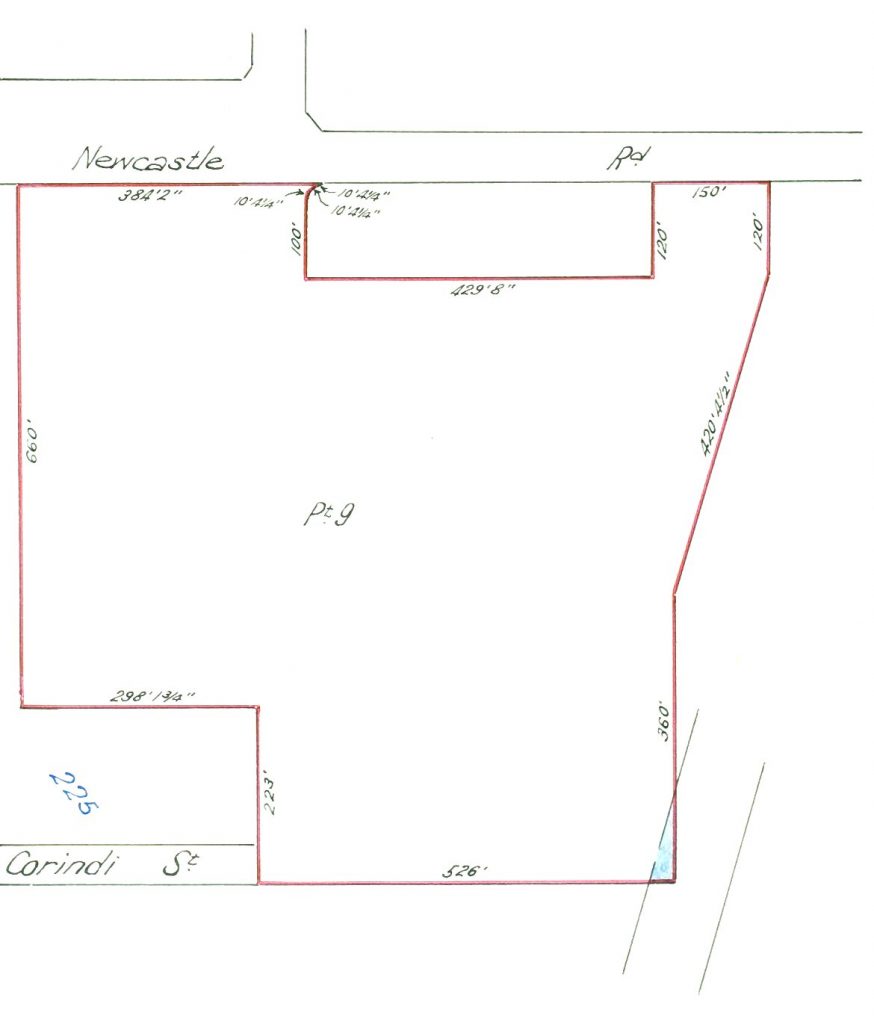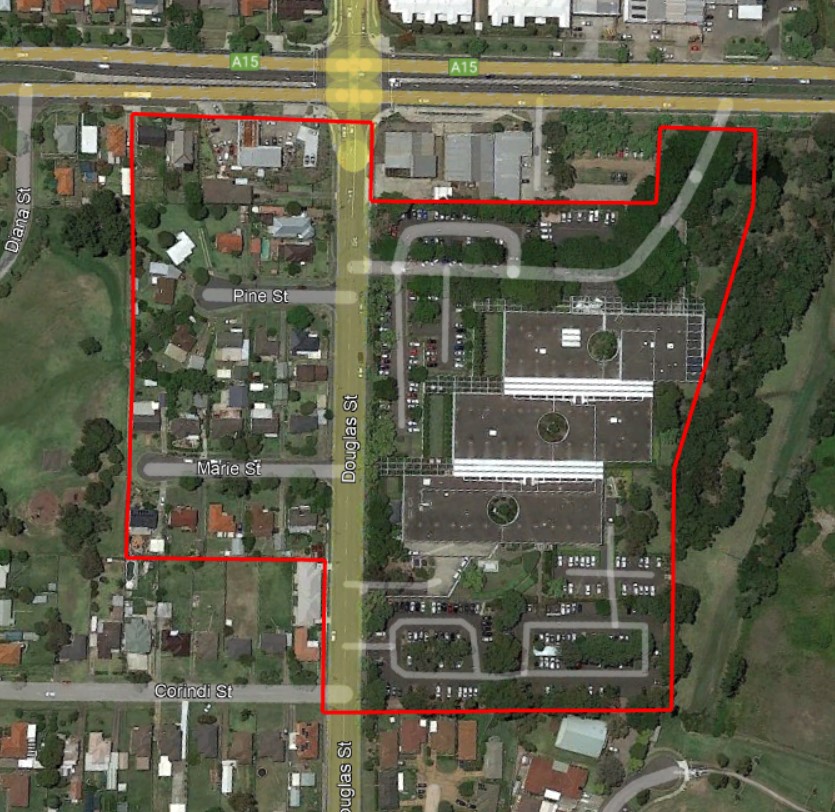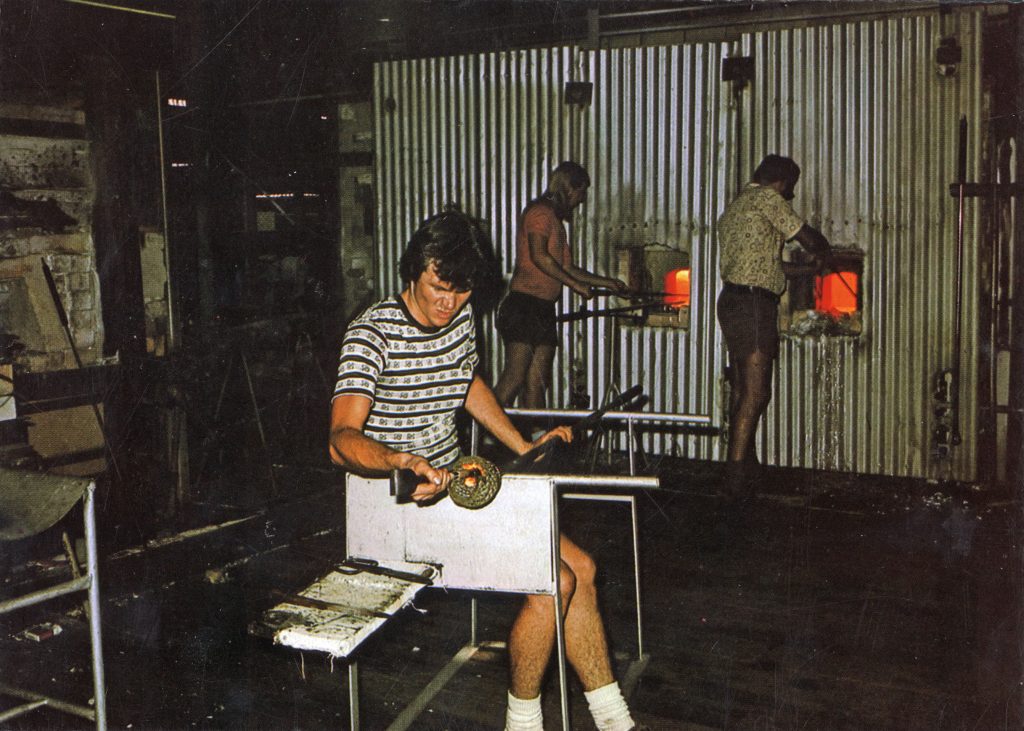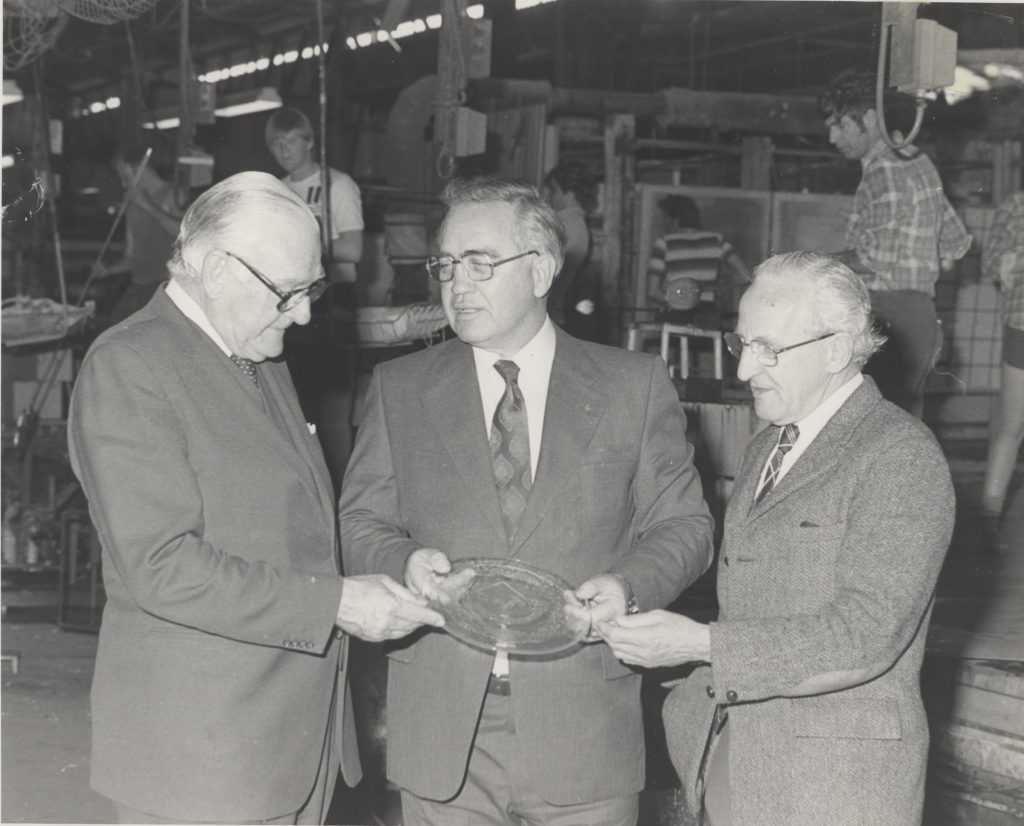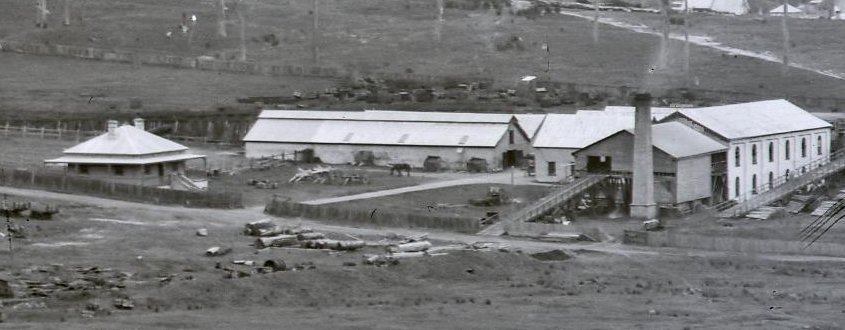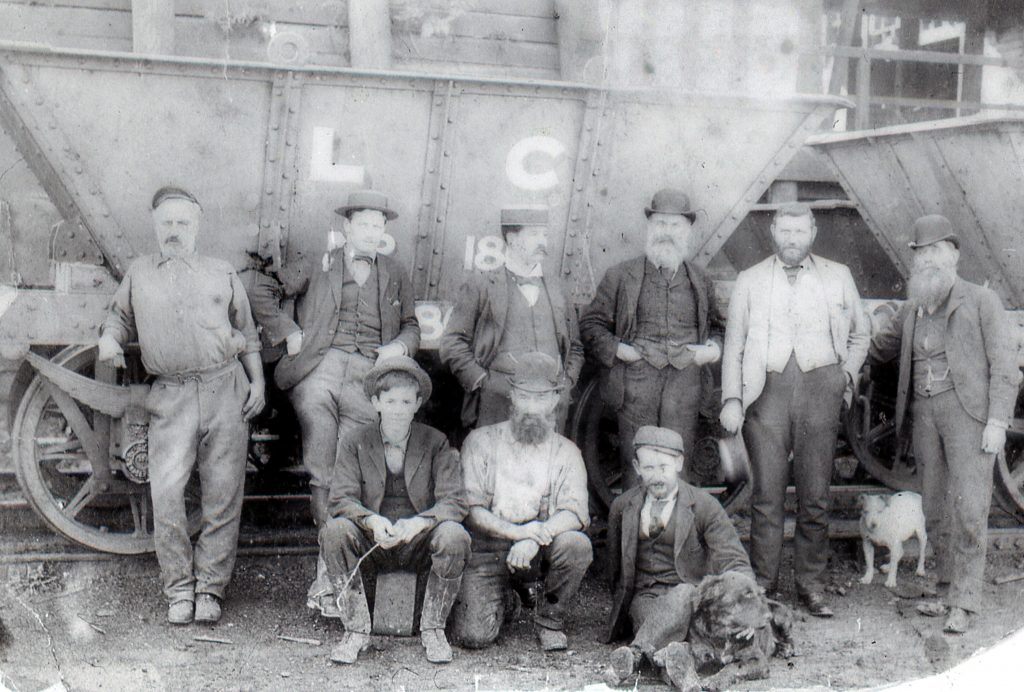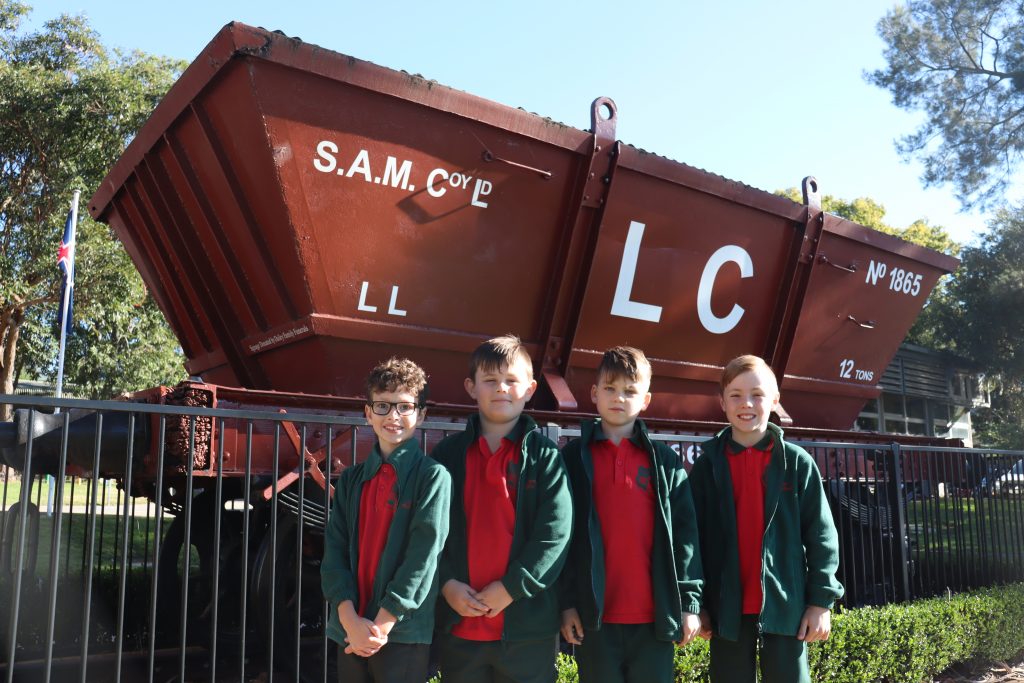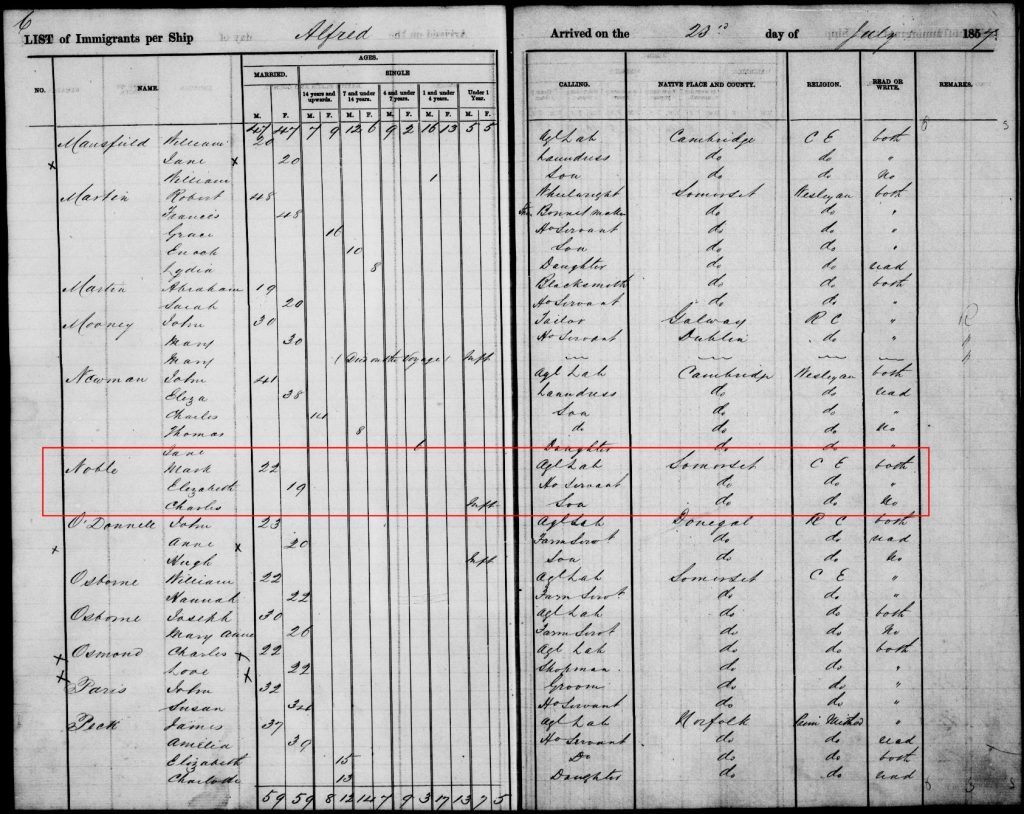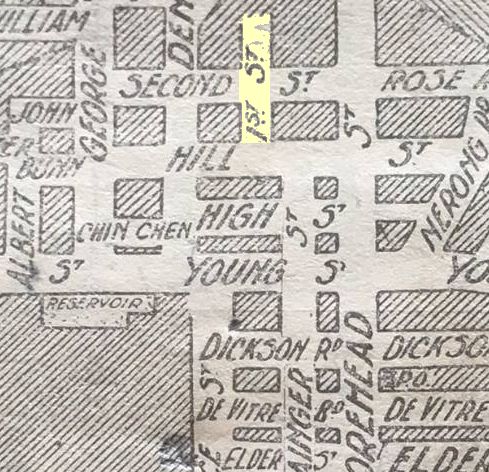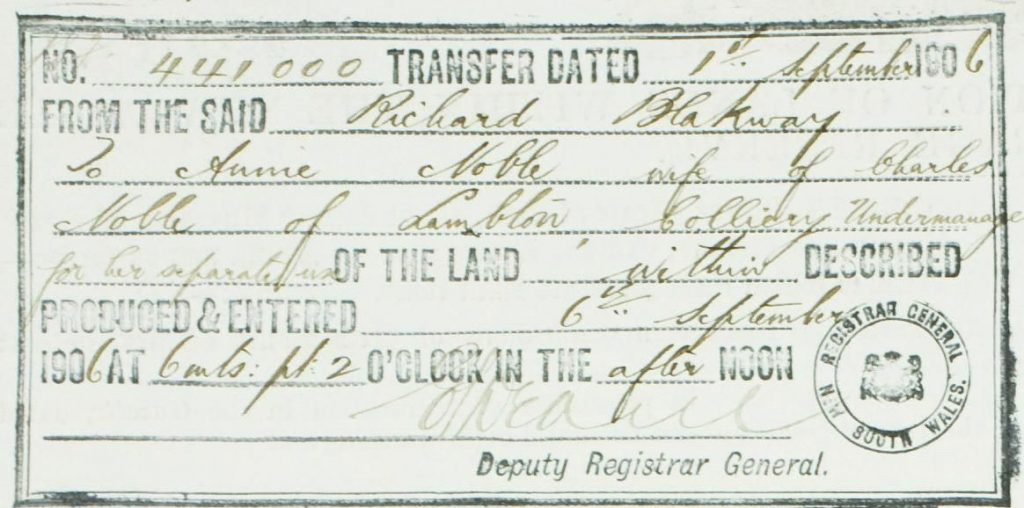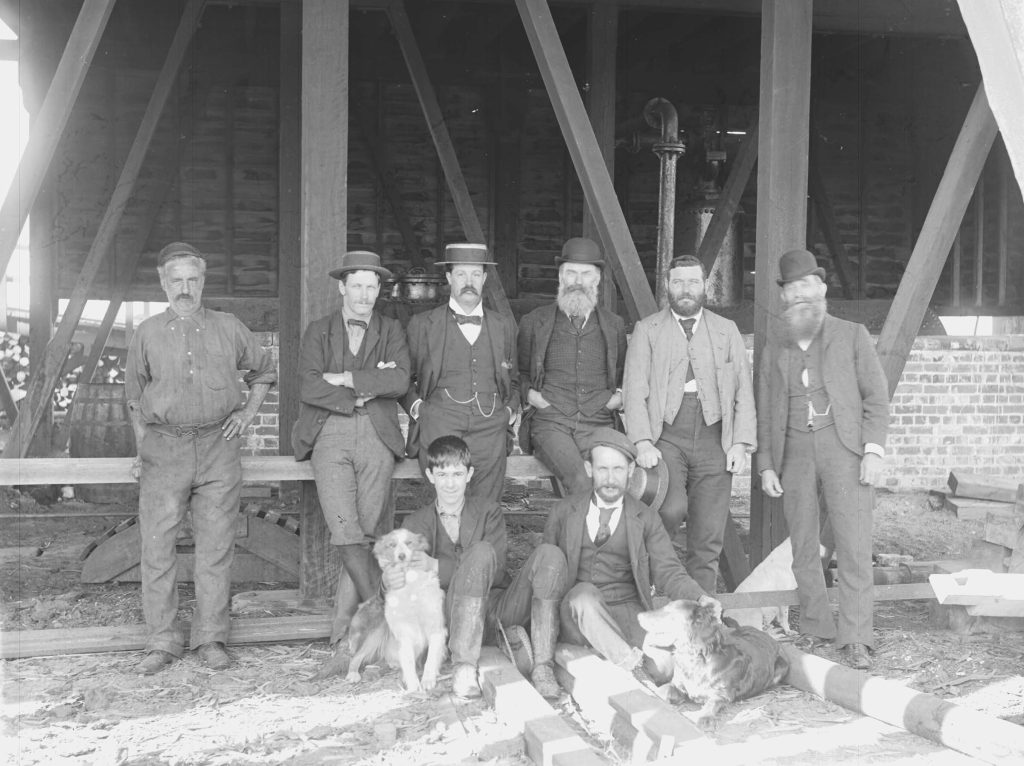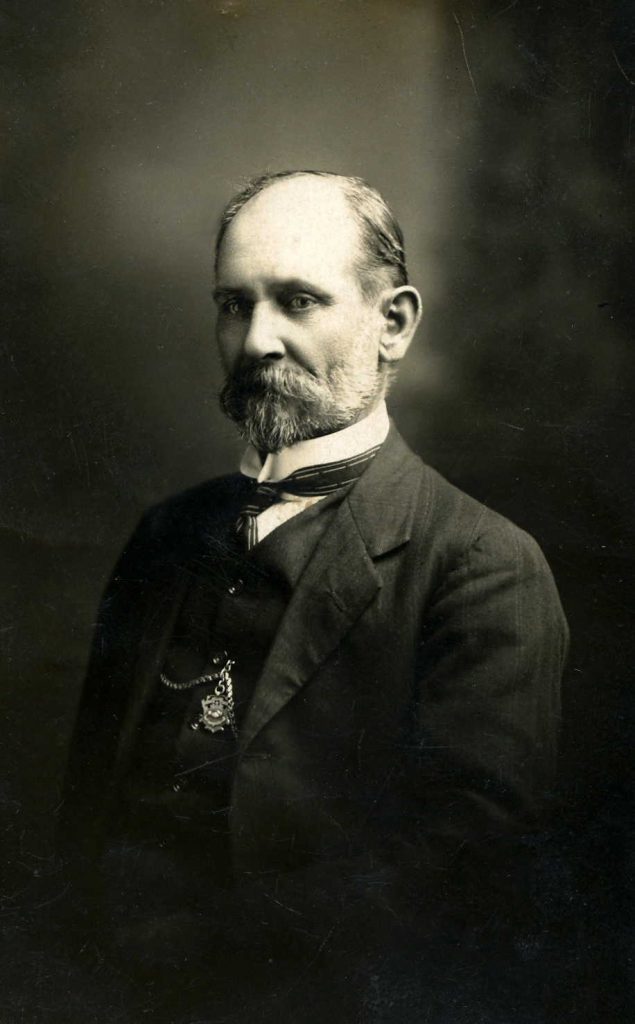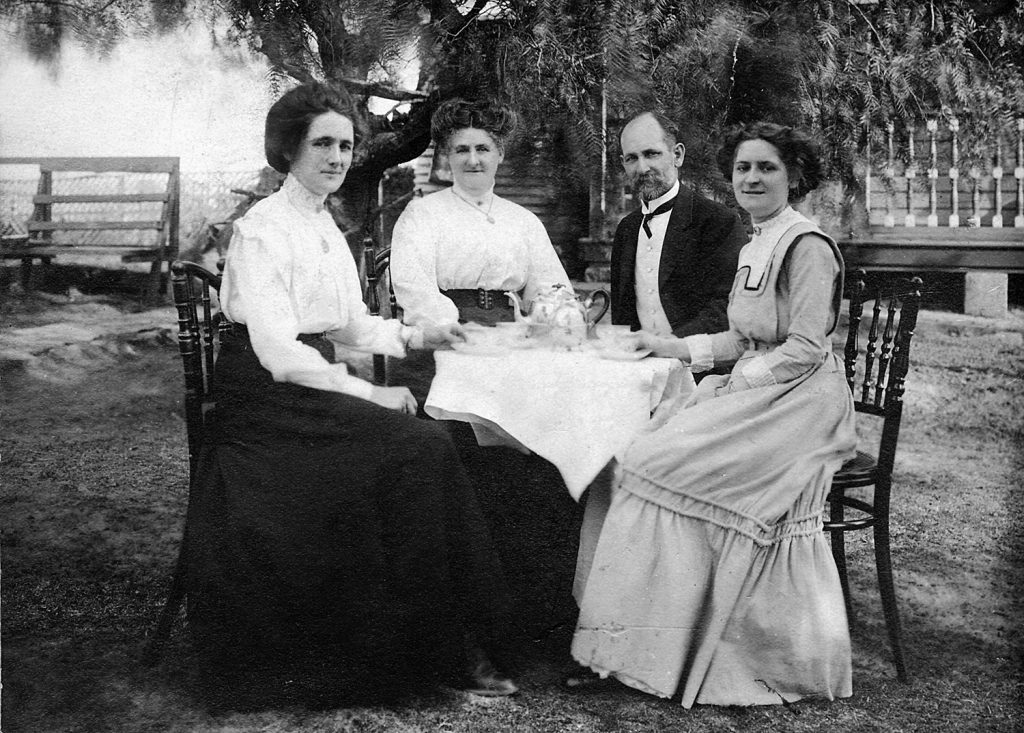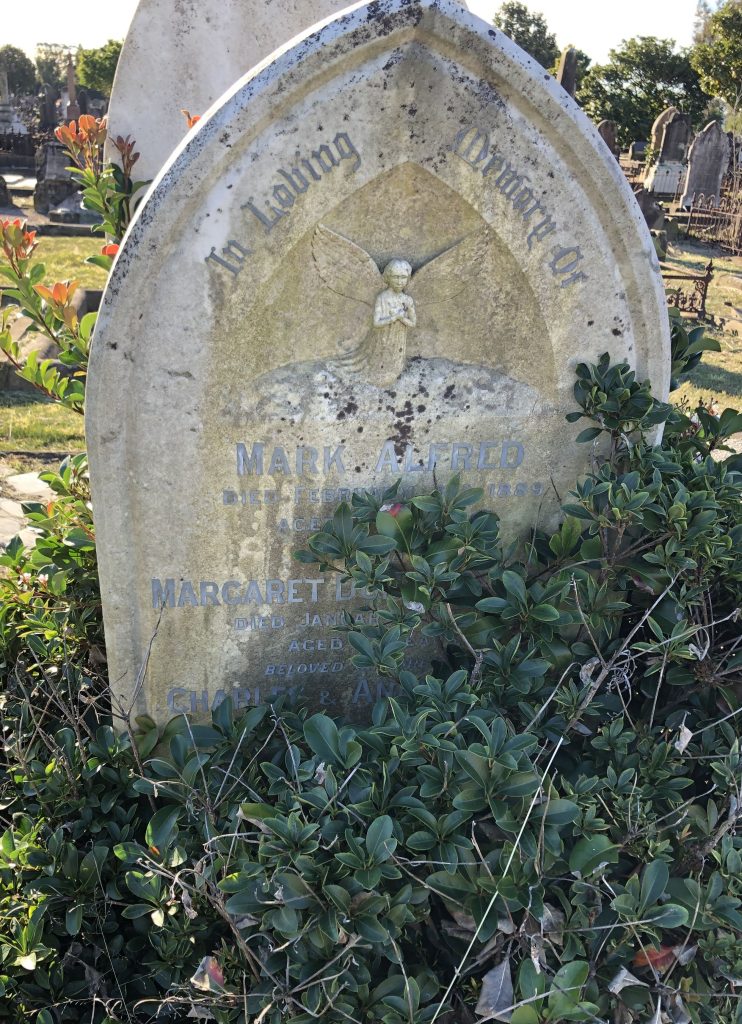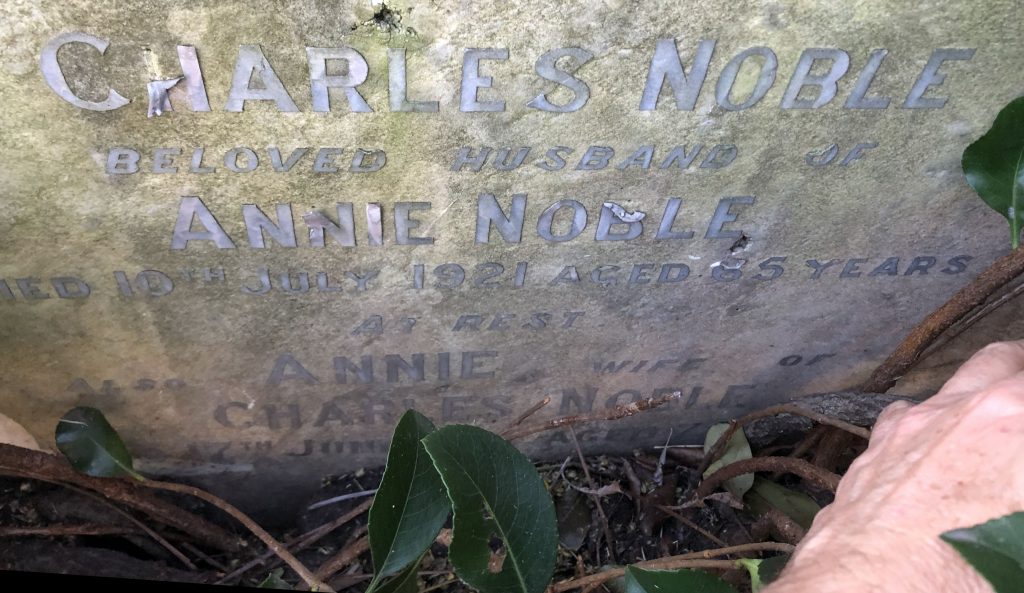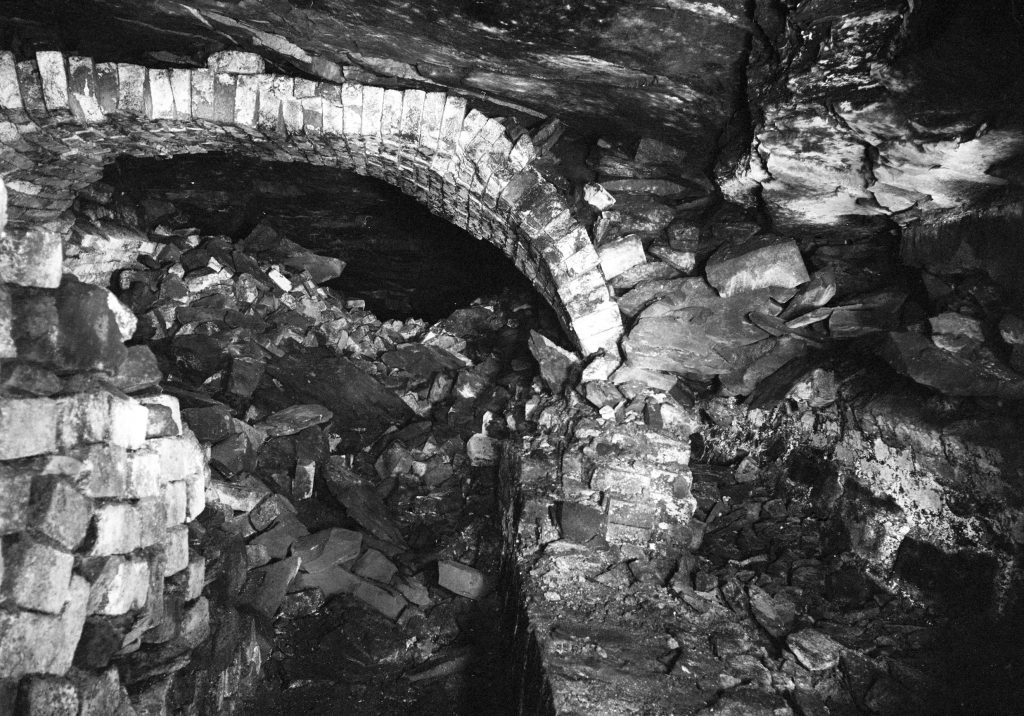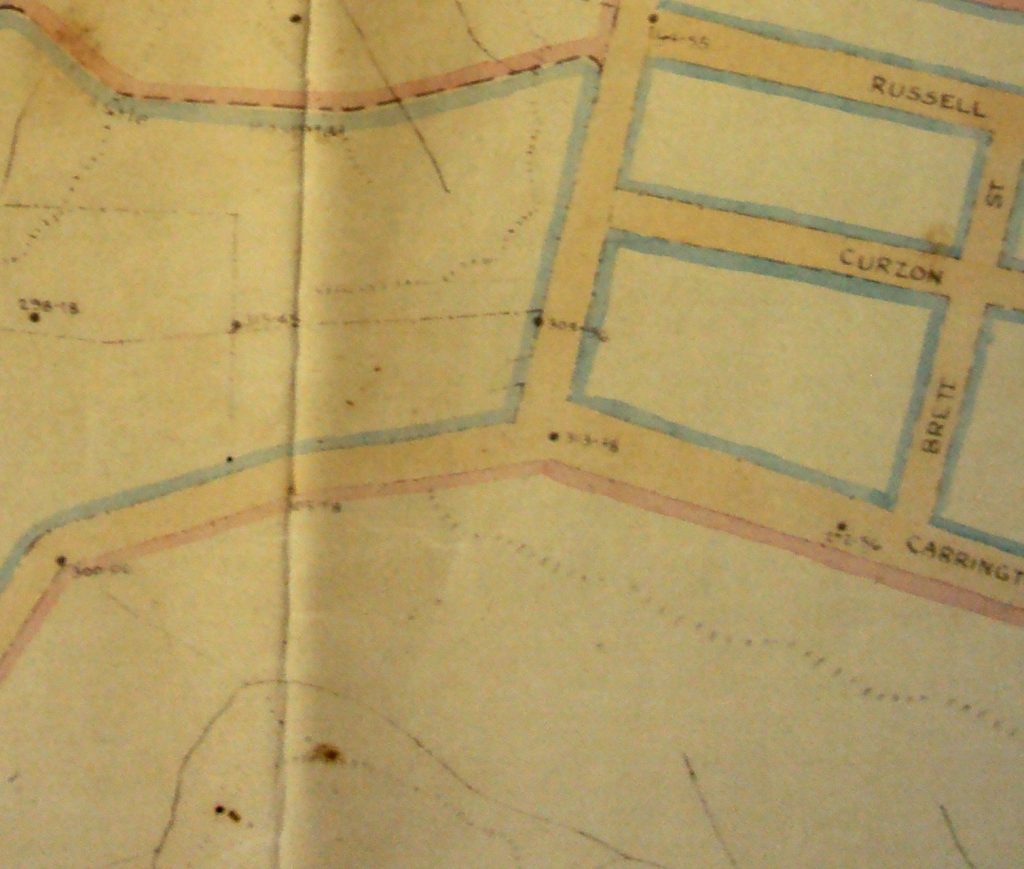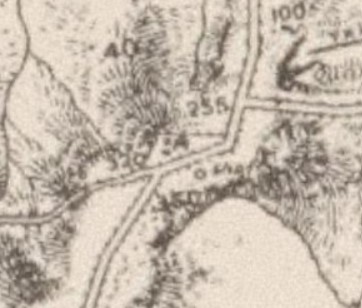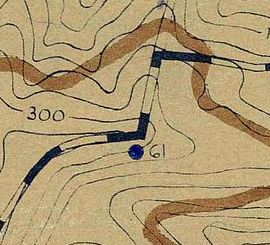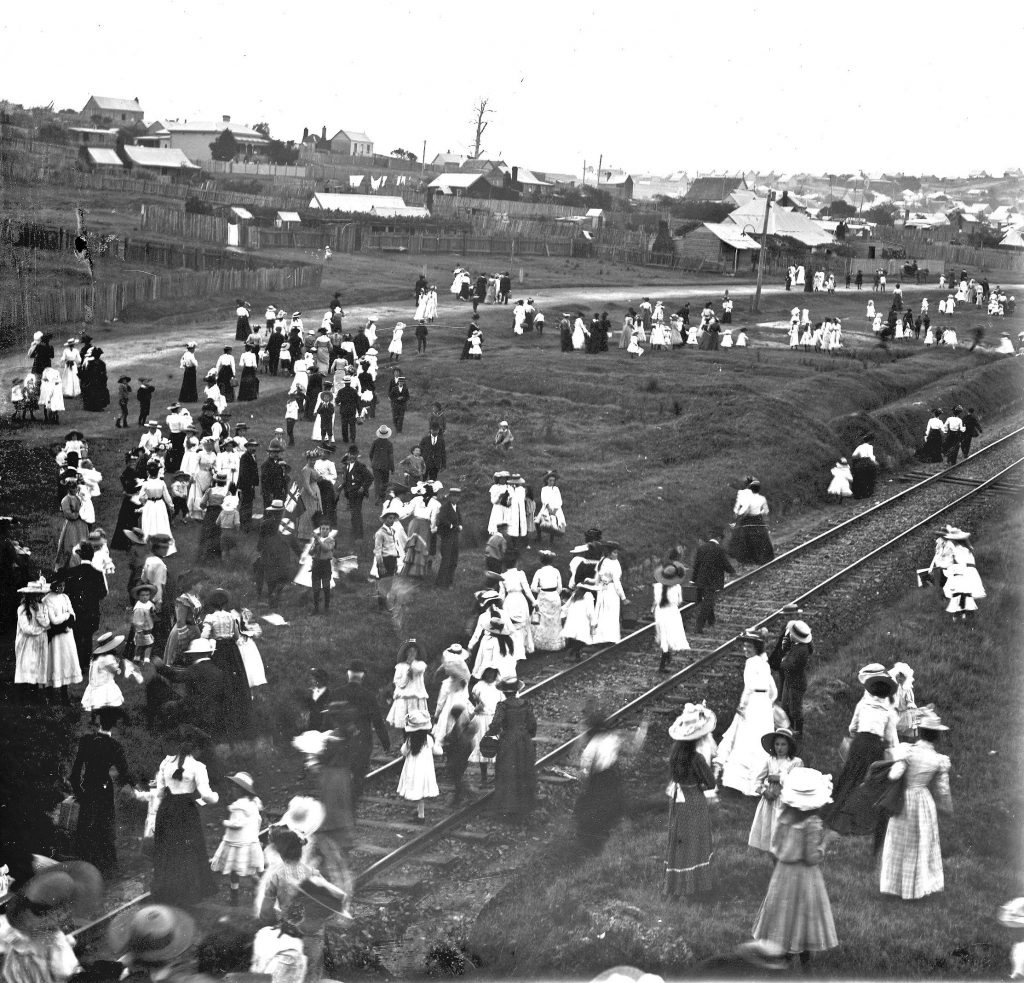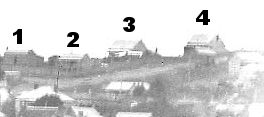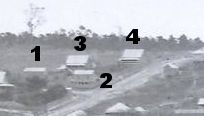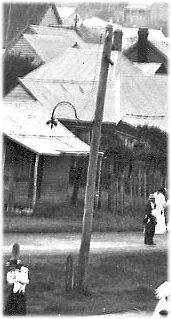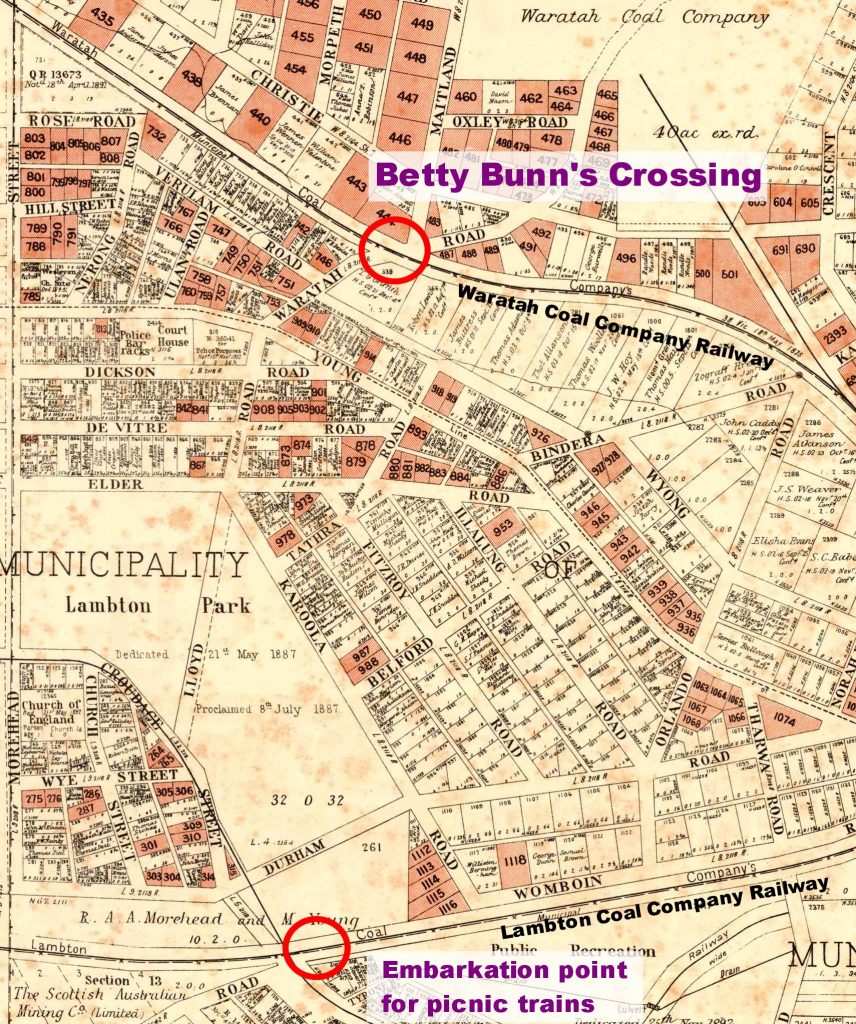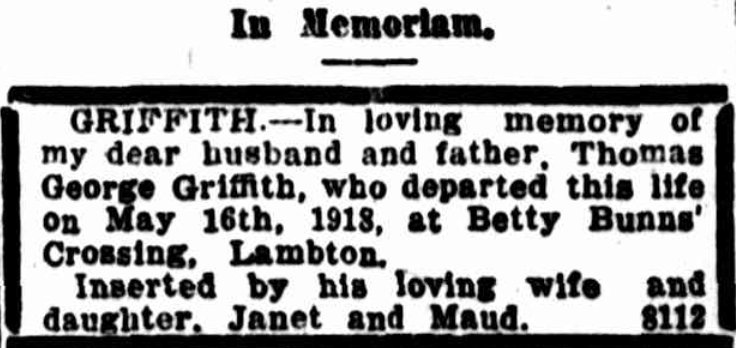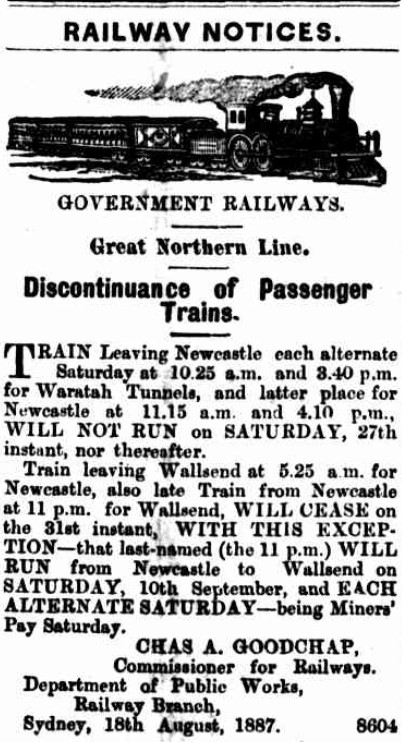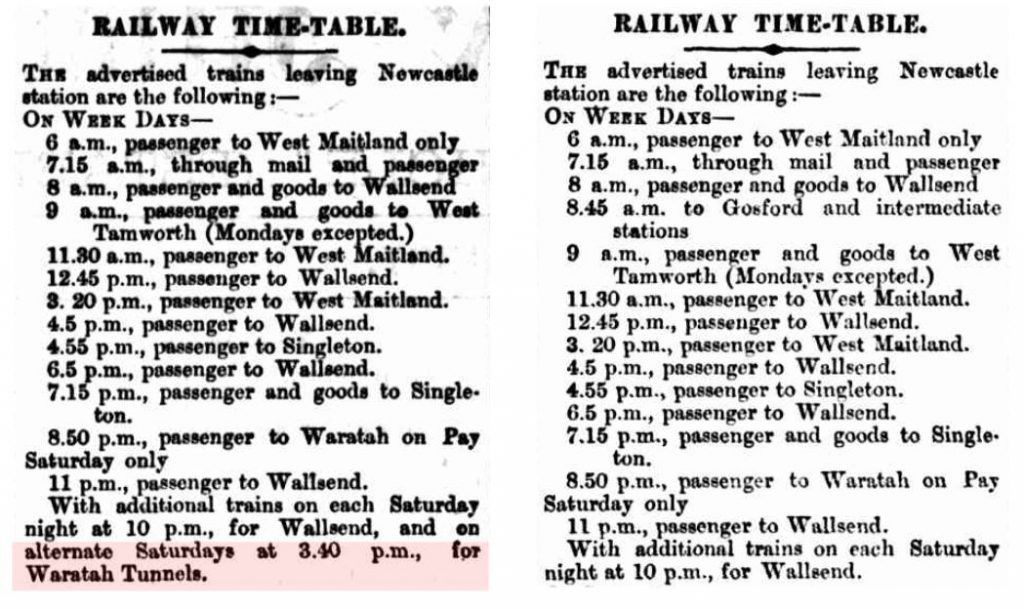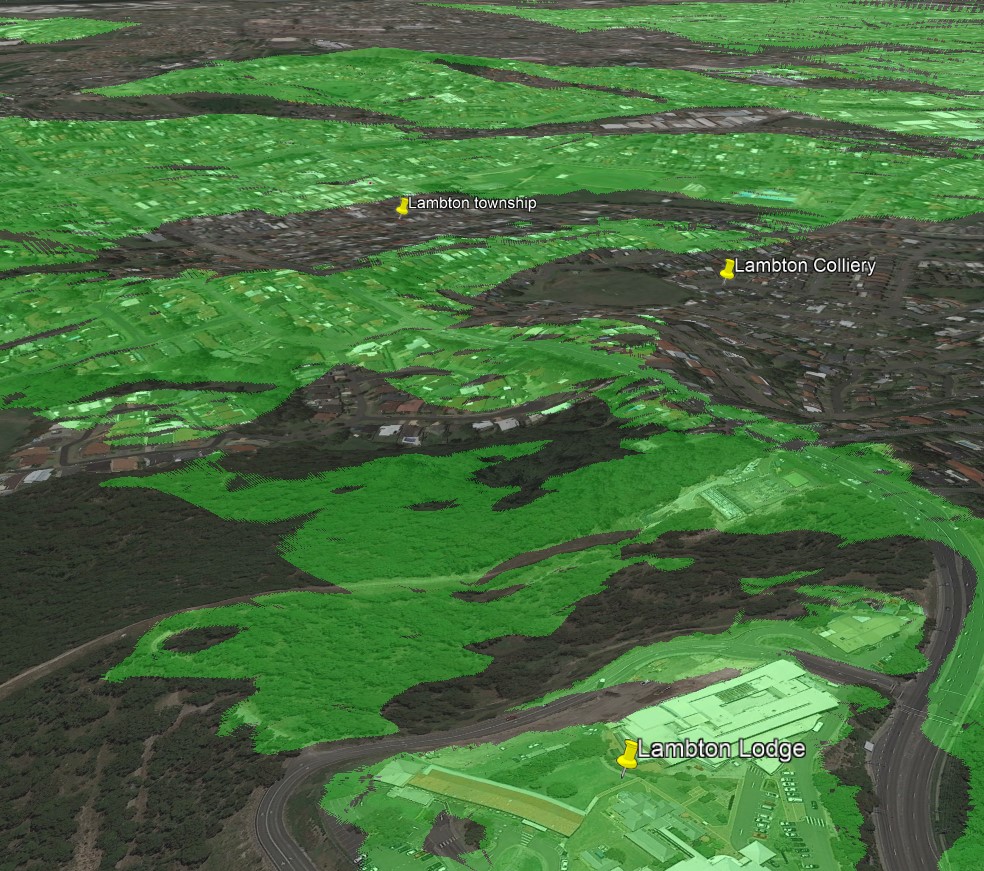“There are at present no streets that can lay any claim to the name – they are simply cart tracks and foot tracks and when one of these becomes too bad to travel on owners of vehicles simply go and pick out another.”
Newcastle Morning Herald and Miners’ Advocate, 29 March 1886.
Such was the state of roads in New Lambton in 1886 some 18 years after the town began. The need to improve the streets was a major impetus for formation of New Lambton council and was extensively discussed in their very first general meeting in March 1889. To turn rutted dirt tracks to solid roadways the council needed gravel, and as they owned no land, they sought assistance from the local collieries.
For the roads in the southern half of the town, the New Lambton Land and Coal Company allowed the council to obtain material from their quarry at the top of Addison Road. To transport the gravel down the hill, in 1890 the council constructed a 400-yard tramway down to Evescourt Road.
For the roads in the northern half of town, Thomas Croudace, manager of Lambton colliery and mayor of New Lambton, agreed in 1891 for the council to use the company’s quarry in the pit paddock hillside. As before, a tramway was constructed to get material down to the streets. Unsurprisingly, the combination of skips, rails, and a steep incline proved irresistible to local lads. In October 1891 a 13-year-old boy was severely injured when the skip he was riding down the hill left the rails.
After the initial construction of roads, the council does not appear to have used the Lambton colliery quarry again. The company sold the land to developers in 1956 and the location of the former quarry is now hidden by housing. In Addison Road the council purchased the quarry in 1896 and continued using it until the 1920s. The land is vacant today, but still has a few reminders of its past use lying amongst the undergrowth.

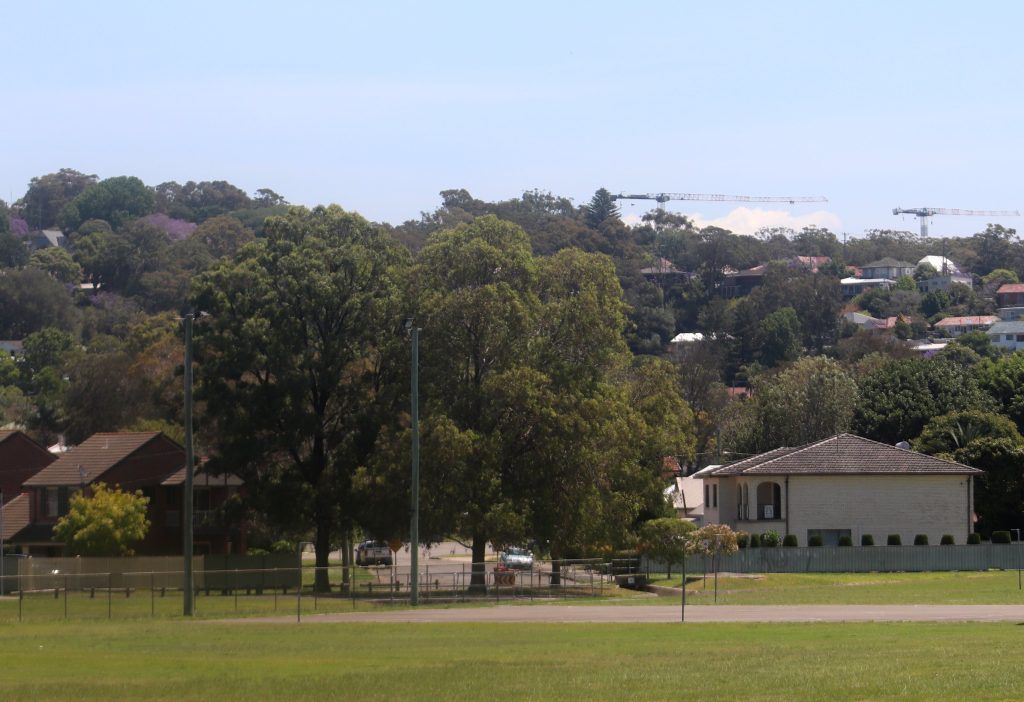
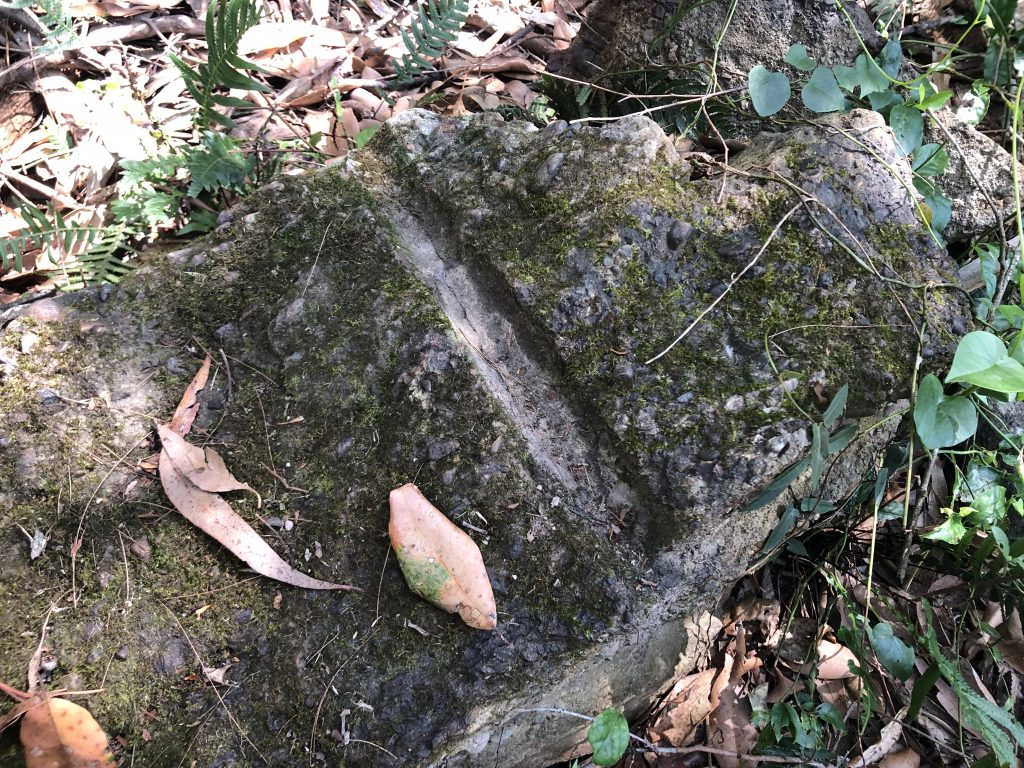

The article above was first published in the December 2023 edition of The Local.
Additional Information
New Lambton colliery began operations in June 1868 and a township soon formed around it. The following year The Newcastle Chronicle reported on the progress of the town, including the state of the roads …
As yet no streets have been formed, and, with the exception of a kind of a main road, leading through the mostly inhabited part of the township, there is no other thoroughfare, and from the multiplicity of the stumps that are still visible, even in close proximity to the houses, perambulating the village in a dark night must be a difficult undertaking. It would be most advisable for the residents to take early steps for making one or two tolerably passable streets, for the lack of this convenience in any township is a serious drawback.
The Newcastle Chronicle, 16 September 1869.
Despite this advice for better roads, seven years later the roads were still in need of much attention.
Bad roads are now the order of the day, and between Old and New Lambton they are in a very bad and almost impassable state, owing chiefly to the recent heavy rain.
The Maitland Mercury and Hunter River General Advertiser, 5 August 1876
Twelve years on, the lack of decent roads was a leading inspiration for the residents of New Lambton to press for the creation of a municipal council.
It is rumoured that an effort is to be made to have this town incorporated and proclaimed a municipality. There are at present no roads or streets other than the main road to Newcastle that can lay any claim to the name. They are simply cart tracks and foot tracks and when one of these becomes too bad to travel on owners of vehicles simply go and pick out another, which for a time suits them, and so on. If the place was incorporated, this state of things would soon become a thing of the past, because regular streets would be laid out, made, and maintained, and every traveller and resident would enjoy the benefit – a benefit which would far more than recoup the few shillings per year the inhabitants would pay in rates.
Newcastle Morning Herald and Miners’ Advocate, 29 March 1886.
Addison Road Quarry
Within a year of the council being formed in 1889, the Improvement Committee was seeking permission from Alexander Brown (managing director of the New Lambton colliery) to use their quarry for road making materials. At the council meeting of 12 March 1890 the committee recommended …
That a deputation wait upon Mr. A. Brown to see what terms he would allow the council to open out quarries upon lots 36 and 37, near Mr. Hincks’ house; also to see upon what terms he would allow the council the use of 400yds of rails and sleepers. 2. That a tramway be laid from the proposed quarries down to near Mr. Hilton’s place, a distance of about 400yds; also that a tip and shoot be erected.
Newcastle Morning Herald and Miners’ Advocate, 14 March 1890.
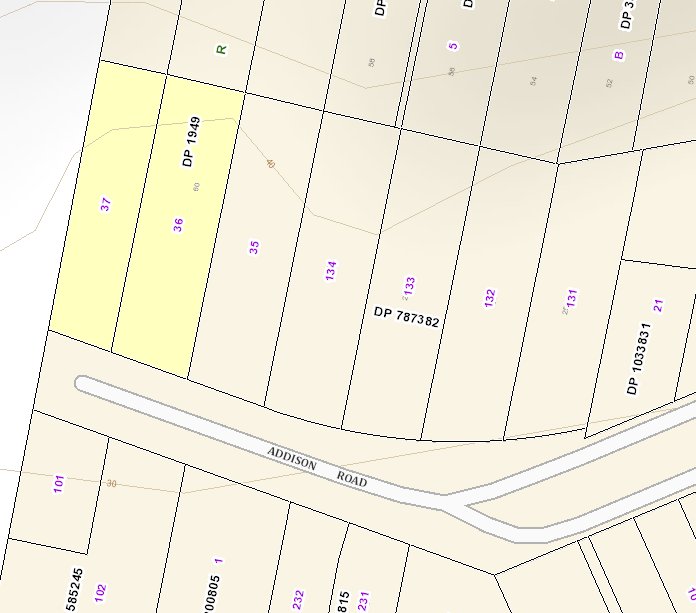
The 12 March 1890 meeting of New Lambton council refers to the quarry being “near Mr Hincks” house. Land title Vol-Fol 1468-110 shows that Richard Hincks’ property was at the top of Addison Rd, opposite the quarry. Sometimes the newspapers referred to the quarry as “Hincks quarry”, simply because it was near his house.
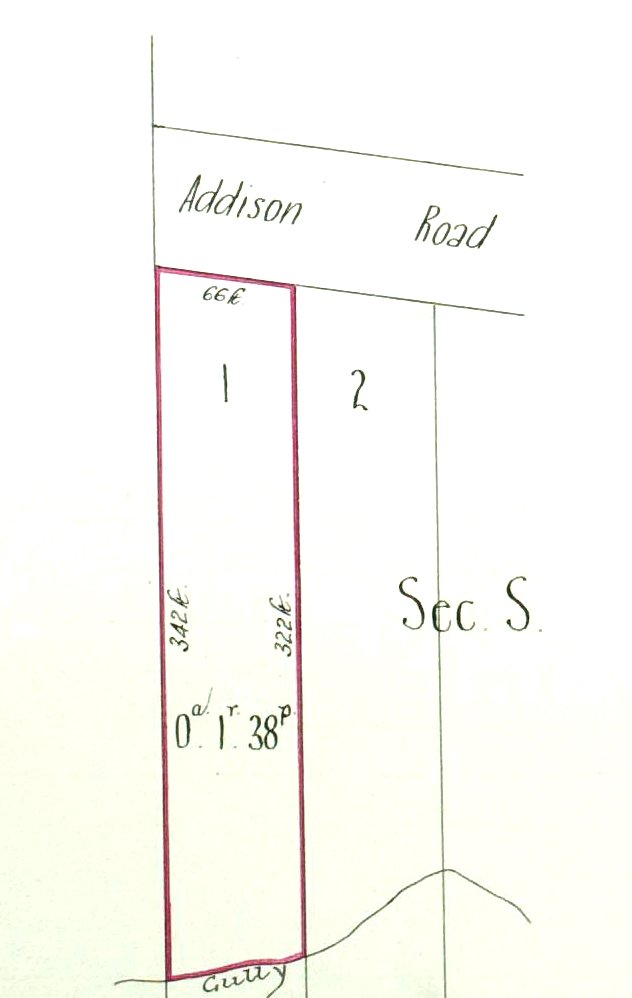
The improvement committee’s report recommended that a tramway be laid “down to near Mr. Hilton’s place, a distance of about 400yds”. Land title Vol-Fol 992-68 shows that Matthew Hilton owned lots 22 and 23 near the bottom of Addison Rd.
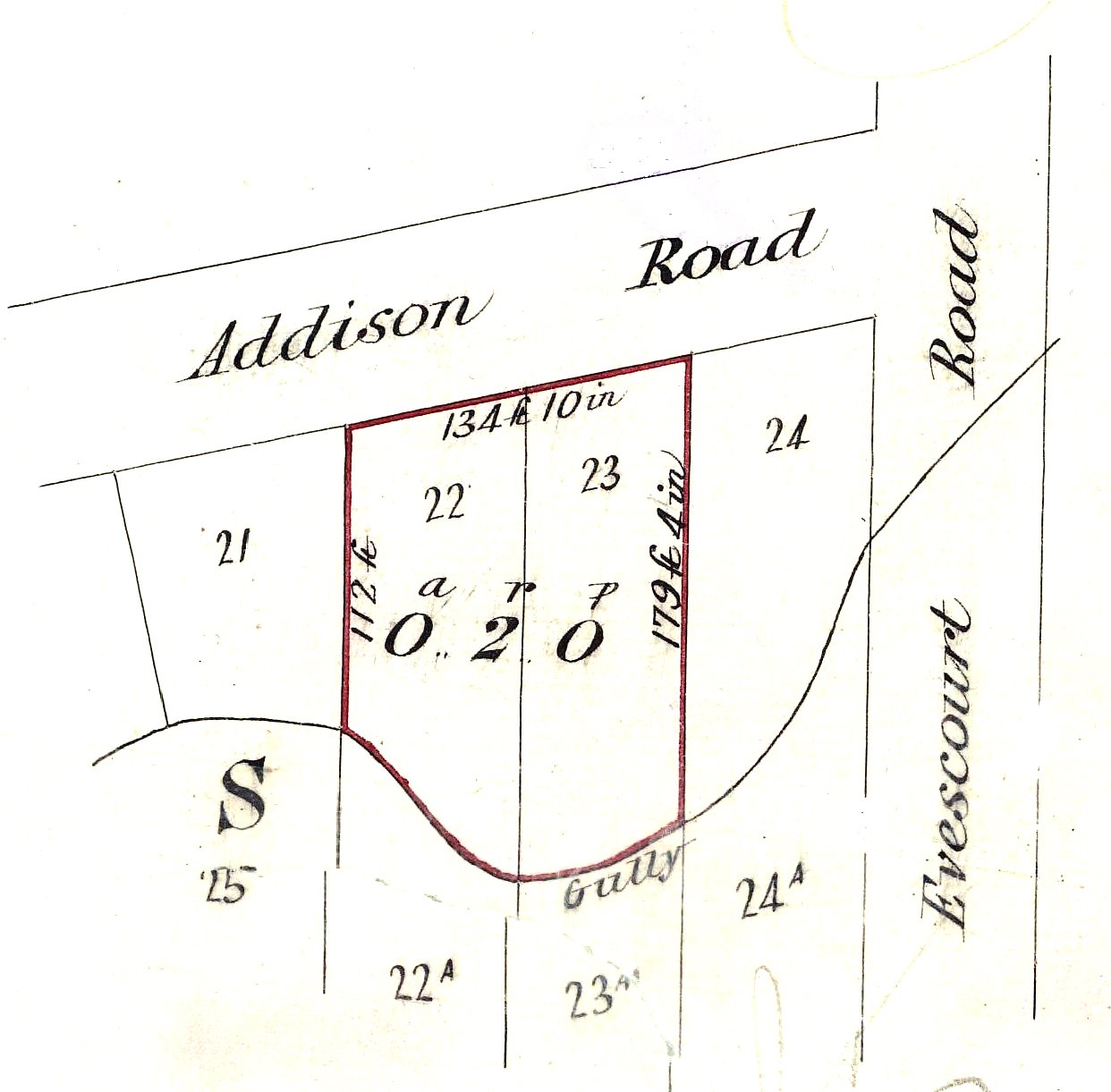
We have no information on the exact route of the tramway, but a straight line of 400 yards in length (shown in yellow below) matches the distance between the quarry and Hilton’s property.
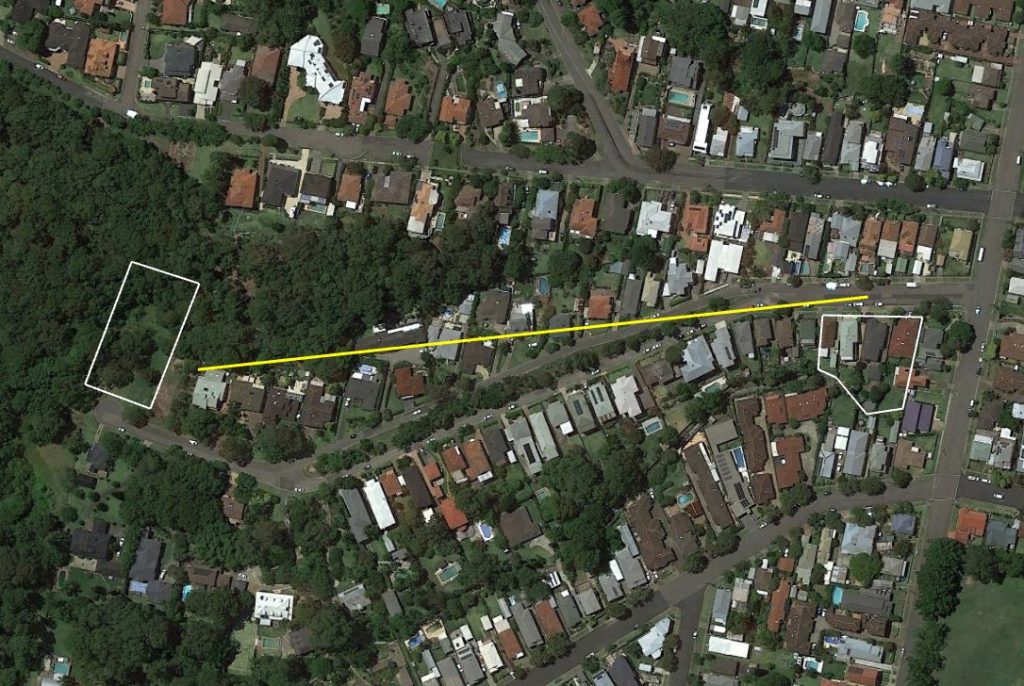
The council’s request to use the colliery’s quarry proved successful. The council meeting of 26 March 1890 reported …
From the Mayor and Alderman Gray, who had interviewed Mr. A. Brown, when that gentleman offered to allow the council to work the gravel quarry on lots 36 and 37 on the New Lambton estate at the rate of 4d per yard, and the use of rails and sleepers for a tramway free of charge
Newcastle Morning Herald and Miners’ Advocate, 28 March 1890.
The council then called for tenders to construct the tramway.
Four tenders were received, resulting in the tender of Hinton & Co., being accepted for the sum of £23 18s 6d. The tender of Hinton and Co. was also accepted for the construction of a tramway hopper, for the sum of £79 18s.
Newcastle Morning Herald and Miners’ Advocate, 16 May 1890.
Hinton completed the tramway, but being more work than he anticipated he asked the council for extra payment. The curt response was that …
… the contractors to be informed of the previous decision of the council to the effect that they cannot feel justified in paying extras, as the work for which extras are claimed was provided for in the specifications.
Newcastle Morning Herald and Miners’ Advocate, 16 August 1890.
In February 1896 the council resolved to “negotiate with the New Lambton Company for the purchase of lots 36 and 37, section S, near Hinck’s, for a quarry” and also “to place the tramline in order.” The Company agree to sell the the two lots for £15 each, but after a further inspection of the site the Mayor reported that …
… he was of opinion that the council would act wisely in purchasing four allotments from the New Lambton Co., as it was clear the gravel extended with a much larger face in the two allotments through from the present quarry. Alderman Williams moved, “That £50 be offered to the company for the four lots.”
Newcastle Morning Herald and Miners’ Advocate, 21 February 1896.
The sale of 4 lots of land totalling 1.2 acres was completed in September 1896.
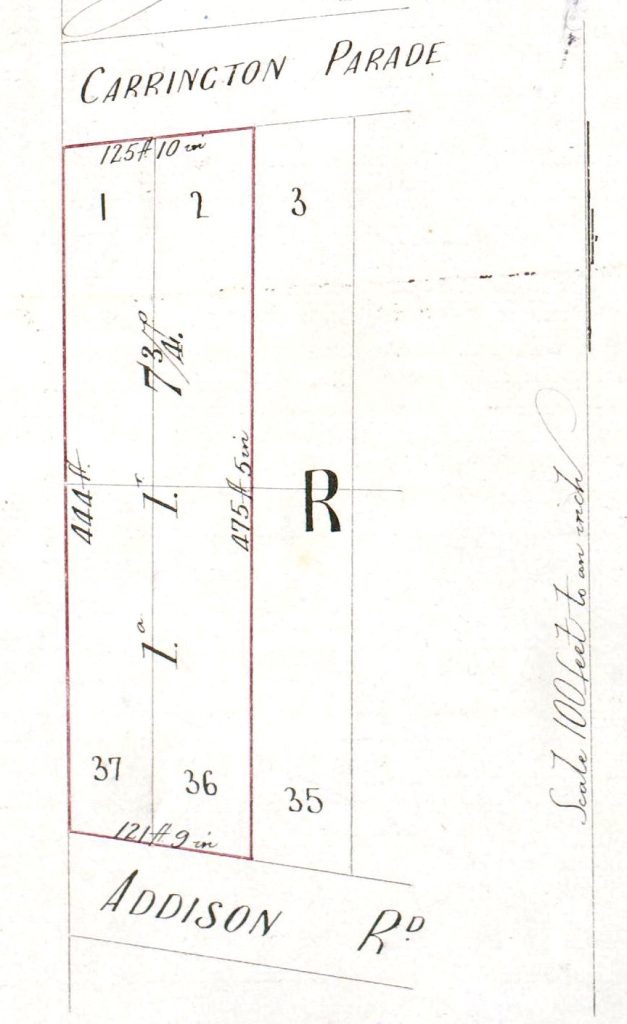
In October 1896, the newspaper reported that
A boy named Benjamin Taite met with a painful accident yesterday morning. He was walking along the rails of the Quarry line, and somehow or other slipped and fell on his arm, breaking both bones near the wrist.
Newcastle Morning Herald and Miners’ Advocate, 26 October 1896.
It is not absolutely certain which “Quarry line” is referred to, but I strongly suspect that it is the Addison Road quarry line, as this is the quarry recently purchased by the council and which they had expressed their intention earlier in the year “to place the tramline in order.”
There are various references to the quarry in the ensuing years. At a 1924 council meeting, correspondence was received from “S.A. Mining Company, granting permission to council to remove gravel from Hincks’ quarry.” At first glance, this appears a little odd, as the council owned Hincks’ quarry, so why would they need permission from the Scottish Australian Mining Company? This can be explained by viewing the extent of the quarry in a 1944 aerial photograph, and overlaying land boundaries, and noting that the quarry extended into Scottish Australian Mining Company land holdings. Presumably this extension westwards was because that was where good gravel could be obtained.
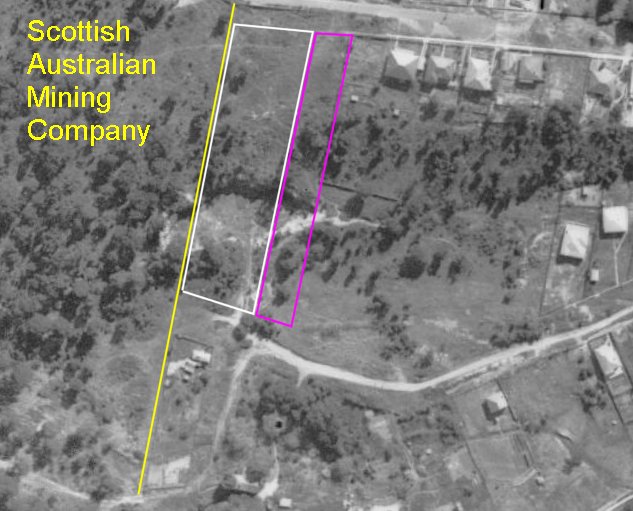
In October 1924 New Lambton Council …
… on the recommendation of the Mayor, decided to increase its quarry property. The council will acquire two blocks of land at a cost of £25 each. This land adjoins Hinks’s quarry, and includes another block. The land contains gravel for street construction and repairs.
Newcastle Morning Herald and Miners’ Advocate, 9 October 1924.
This land purchase (lots 3 and 25 of Section S of DP1949) was completed in April 1925. Vol-Fol 3735-122.) There is a brief mention of Hincks’ Quarry in 1926.
The steam lorry had been engaged for the fortnight in street patching with gravel from Fern Quarry. The motor lorry arrived on July 8, and was being used in carting gravel from Hincks’ quarry, and was doing good work.
Newcastle Morning Herald and Miners’ Advocate, 15 July 1926.
After this date there are no more mentions of this quarry being actively used, presumably because the council was now sourcing its gravel requirements from the larger Fern Quarry (located on Peatties Road Kotara) that they purchased in August 1926. (Vol-Fol 3808-23)
Lambton Colliery Quarry
A note on street names: The Lambton colliery quarry was used for the construction of streets in the northern part of New Lambton, on the Commonage. Due to a mix up many of these streets were given one name by the council, and a different name by the Lands Department in Sydney. Eventually the council had to give way to the Lands Department names. Hence a number of street names mentioned below in council reports are now known by a different name. See the article “Sadly Bungled Street Names” for further details.
In June 1890, Thomas Croudace, alderman on the New Lambton council and also manager of the Lambton Colliery …
… offered on behalf of the company, to allow the council to quarry chatrock on the Lambton Company’s estate at a price to be fixed at a future date.
Newcastle Morning Herald and Miners’ Advocate, 7 June 1890.
Chatrock is gravel smaller than pea gravel, but larger than sand. In April 1891 the council made formal moves to request use of the Lambton colliery quarry.
Alderman THOMAS moved, that a deputation, consisting of Aldermen Capewell, Lonsdale, and Hitchcock, wait upon Mr. Croudace, and ask his permission to use the colliery quarry for Dent and Gibson streets contracts.
Newcastle Morning Herald and Miners’ Advocate, 24 April 1891.
The Mayor (Thomas Croudace) intimated that he would do his utmost as regards letting the council have gravel to make Dent and Gibson-streets.
Newcastle Morning Herald and Miners’ Advocate, 8 May 1891.
The request was granted and the council then called for tenders for the extracting gravel from the quarry. In July 1891 the contractors, Messrs Friel and Curran, wrote to the council …
… stating that the gravel in the colliery quarry was much heavier than in Russell-street, and asking for consideration; the means of conveying it would also be inconvenient and costly.
Newcastle Morning Herald and Miners’ Advocate, 3 July 1891.
Although no formal resolution of the council regarding the transportation of gravel is recorded in newspaper reports, the council decided that a tramway down the hill was required, and sought the co-operation of the Lambton Colliery in its construction. In October 1891 the council resolved …
… That Aldermen Lonsdale and Capewell wait upon Mr. F. Croudace in regard to the speedy completion of the quarry tramway … The MAYOR and Alderman DEAN reported that Mr. F. Croudace had promised to provide rails and sleepers for the tramway in Dent-street.”
Newcastle Morning Herald and Miners’ Advocate, 23 October 1891.
With a lack of worksite security combined with the lure of adventures, soon afterwards the paper reported that
ON Tuesday evening a serious accident happened to a boy, aged 13 year, son of Mr. Simeon Davies, New Lambton. It appears the boy, with a companion, was riding on some full skips, which were being brought down a steep incline from the quarry in the Lambton Colliery paddock. The skips left the rails and threw the boys off, injuring the boy Davies severely. He was at once conveyed home and medical assistance procured, when it was found that his arm had suffered a compound fracture, and his leg was fractured above the ankle. It is feared the injuries to the arm will necessitate amputation. The boy at present is in a critical condition.
Newcastle Morning Herald and Miners’ Advocate, 29 October 1891.
It is unclear when the council ceased using the Lambton colliery quarry as a source of gravel. The last mention in the newspapers is in June 1892 where the Mayor is permitted to engage men “in quarrying gravel in Russell-street, also in the colliery quarry.” Presumably after the council purchased the Addison Road quarry in 1896, there would have been little need to use the Lambton colliery quarry.
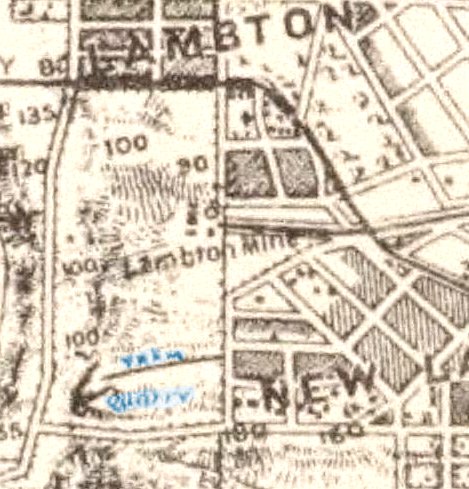
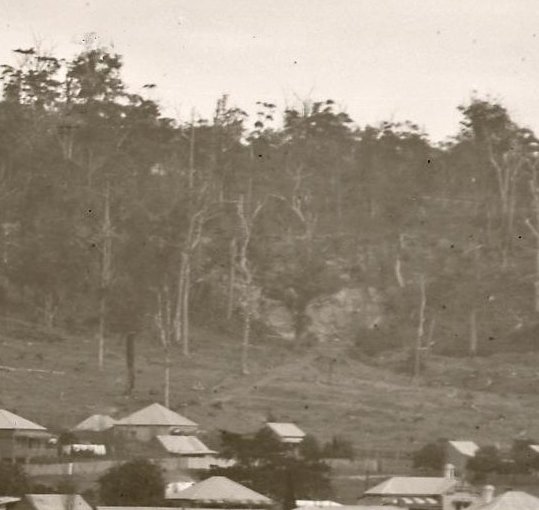
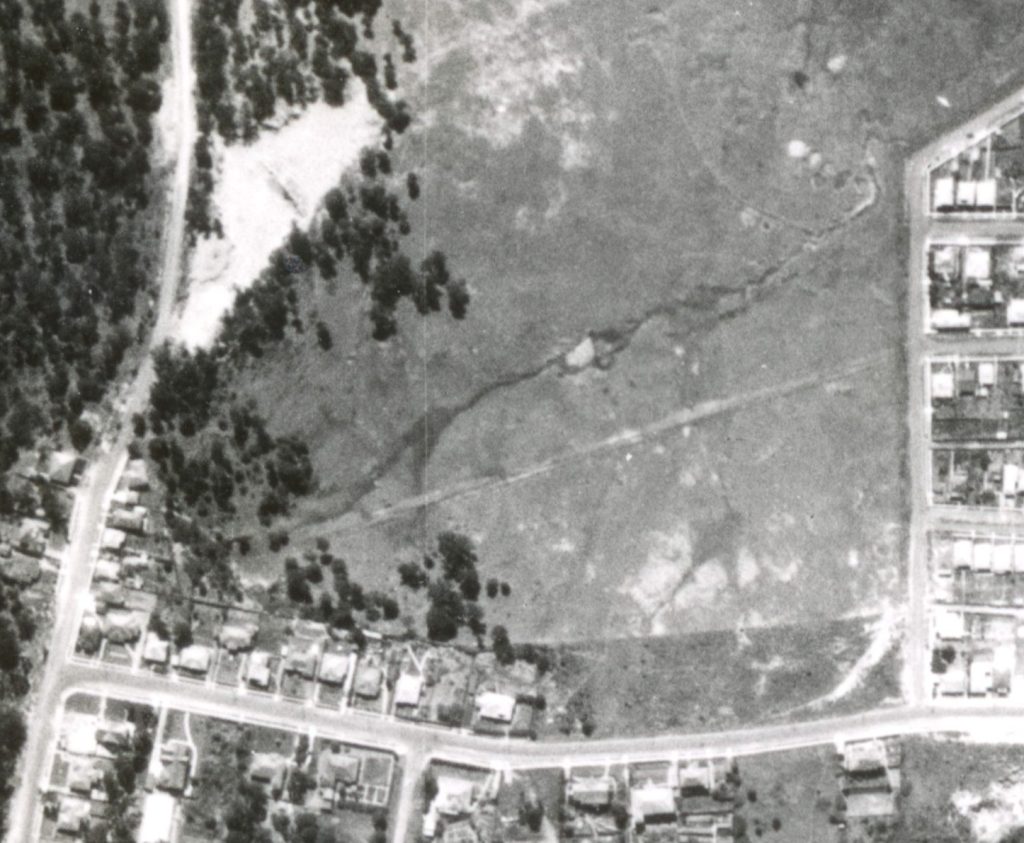
The land on which the quarry was located was sold by the Scottish Australian Mining Company in July 1956 (Vol-Fol 7114-143) and by the mid 1960s suburban development of the area was well underway.
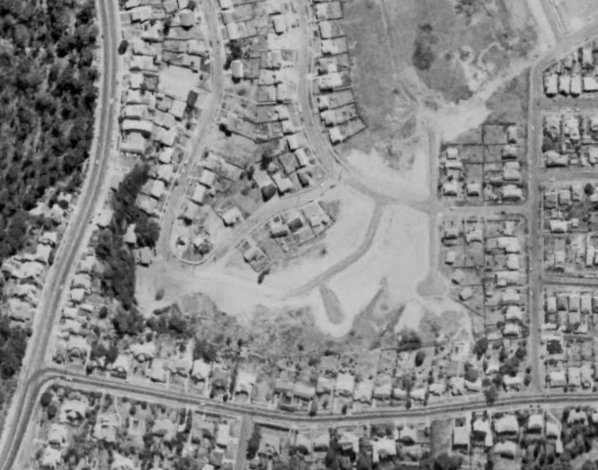
Other New Lambton quarries
The reports of the meetings of New Lambton council mention numerous other local quarries in the period 1899 to 1938. Some of these are named by location. Some are named after a person, although it is often not clear whether the person is the owner of the quarry, the main worker in the quarry, or just someone who lived nearby as was the case with Hincks’ quarry.
- Fern (Fern tree) quarry
- Peatties-road (Peties road) quarry
- Cant’s quarry
- Dobie’s old quarry
- S. Gully quarry
- Russell street quarry
- Marchant’s quarry
- Curzon quarry
- quarry near Plested’s
- Blackbutt quarry
- Tickhole quarry
- Hestelow’s quarry
Newspaper articles
| Article Date Event Date | Notes |
|---|---|
| 16 Sep 1869 | Report on the first year of New Lambton's development, including the state of the roads. |
| 5 Aug 1876 | Bad roads between Lambton and New Lambton. |
| 29 Mar 1886 | Report on the state of New Lambton, and the desire for a municipal council to improve the roads. |
| 14 Mar 1890 12 Mar 1890 | Council requests use of the New Lambton colliery quarry, and the erection of a tramway down the hill. |
| 28 Mar 1890 12 Mar 1890 | Council's request to use the New Lambton colliery quarry granted by A. Brown. |
| 11 Apr 1890 9 Apr 1890 | New Lambton Council decides that "tenders be invited for the formation and laying of about 400 yards of a tramway." |
| 16 May 1890 14 May 1890 | New Lambton Council - tender for construction of quarry tramway and hopper awarded to Hinton and Co. |
| 7 Jun 1890 4 Jun 1890 | "Alderman CROUDACE offered, on behalf of the company, to supply the ashes and to allow the council to quarry chatrock on the Lambton Company's estate at per yard; the price to be fixed at a future date." |
| 16 Aug 1890 14 Aug 1890 | “From Messrs. Hinton and Co., contractors for the quarry tramway and hopper, asking for extras” |
| 4 Jul 1890 2 Sep 1890 | "the matter of obtaining eight skips for the tramway connected with the quarry be left in the hands of the supervising committee and Alderman Thomas" |
| 24 Apr 1891 22 Apr 1891 | "The foreman reported verbally that the Mayor had promised to allow the council to obtain gravel from the colliery quarry. Alderman THOMAS moved, that a deputation, consisting of Aldermen Capewell, Lonsdale, and Hitchcock, wait upon Mr. Croudace, and ask his permission to use the colliery quarry for Dent and Gibson streets contracts." |
| 8 May 1891 6 May 1891 | The Mayor (Thomas Croudace) "intimated that he would do his utmost as regards letting the council have gravel to make Dent and Gibson-streets." |
| 5 Jun 1891 3 Jun 1891 | New Lambton council resolution that "the matter of calling tenders for quarrying gravel in the Lambton Colliery quarry be left with the Mayor." |
| 3 Jul 1891 1 Jul 1891 | "From Messrs. Friel and Curran, stating that the gravel in the colliery quarry was much heavier than in Russell-street, and asking for consideration; the means of conveying it would also be inconvenient and costly." |
| 23 Oct 1891 21 Oct 1891 | New Lambton council, seeking co-operation from "Mr. F. Croudace in regard to the speedy completion of the quarry tramway." |
| 29 Oct 1891 | A 13 year old boy is injured while riding the skips down the tramline from the Lambton Colliery quarry. |
| 17 Jun 1892 15 Jun 1892 | "That 1s 4d per cubic yard be paid to any men the Mayor may engage in quarrying gravel in Russell-street, also in the colliery quarry." |
| 7 Feb 1896 5 Feb 1896 | New Lambton council seeks to purchase the Addison Road quarry. |
| 21 Feb 1896 19 Feb 1896 | "From Mr. Alexander Brown, managing director of the New Lambton Company, offering lots 36 and 37, section R, for £15 each as a quarry, the council to pay cost of transfer." |
| 19 Mar 1896 17 Mar 1896 | Motiona at New Lambton Council "That the managing director of the New Lambton Land and Coal Co. (Mr. A. Brown) be requested to dedicate and align Carrington Parade and Addison-road for the purpose of enabling the council to form and make the roadway to the quarry in a proper manner." |
| 26 Oct 1896 25 Oct 1896 | "A boy named Benjamin Taite met with a painful accident yesterday morning. He was walking along the rails of the Quarry line, and somehow or other slipped and fell on his arm, breaking both bones near the wrist." |
| 22 May 1913 21 May 1913 | "The recent rains had caused the hill on the Addison-road to slip away, and blocked the road to the gravel quarry." |
| 11 Sep 1924 10 Sep 1924 | Correspondence from "S.A. Mining Company, granting permission to council to remove gravel from Hinck's quarry, at the same royalty and conditions applicable to Fern quarry, until such time as the latter quarry was again available." |
| 9 Oct 1924 8 Oct 1924 | Decision by New Lambton council to extend the Addision Rd quarry by purchasing two adjoining blocks of land. |
| 15 Jul 1926 14 Jul 1926 | "The steam lorry had been engaged for the fortnight in street patching with gravel from Fern Quarry. The motor lorry arrived on July 8, and was being used in carting gravel from Hincks' quarry, and was doing good work." |
| 24 Aug 1950 | "A landslide in Addison-road, New Lambton, was not due to mine subsidence, according to an expert's report. An inspection of a nearby disused gravel quarry indicated the underlying strata consisted of about four feet of clay shale sub-soils lying on a bed of hard conglomerates." |

